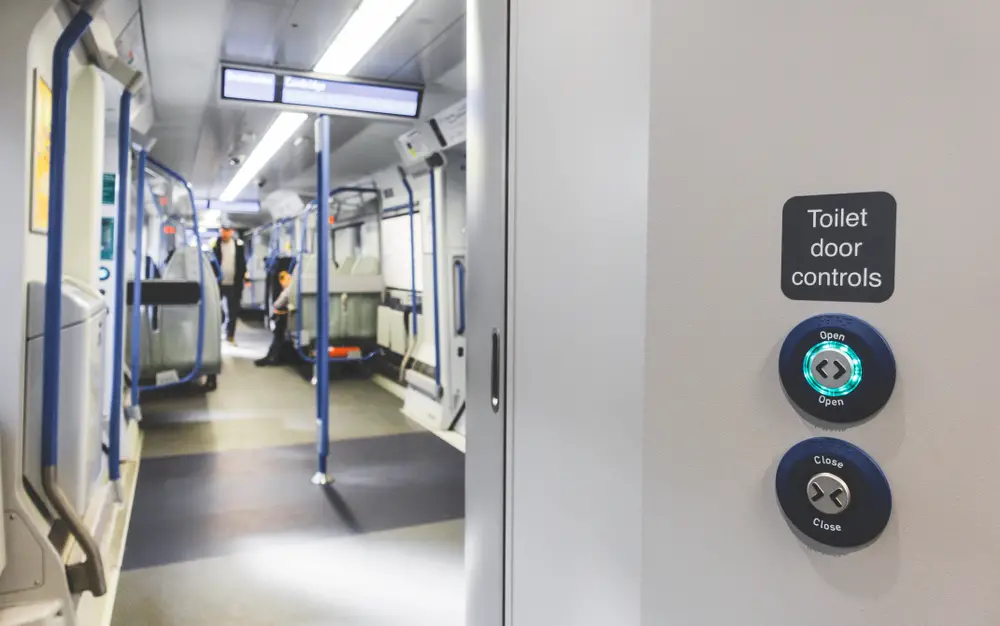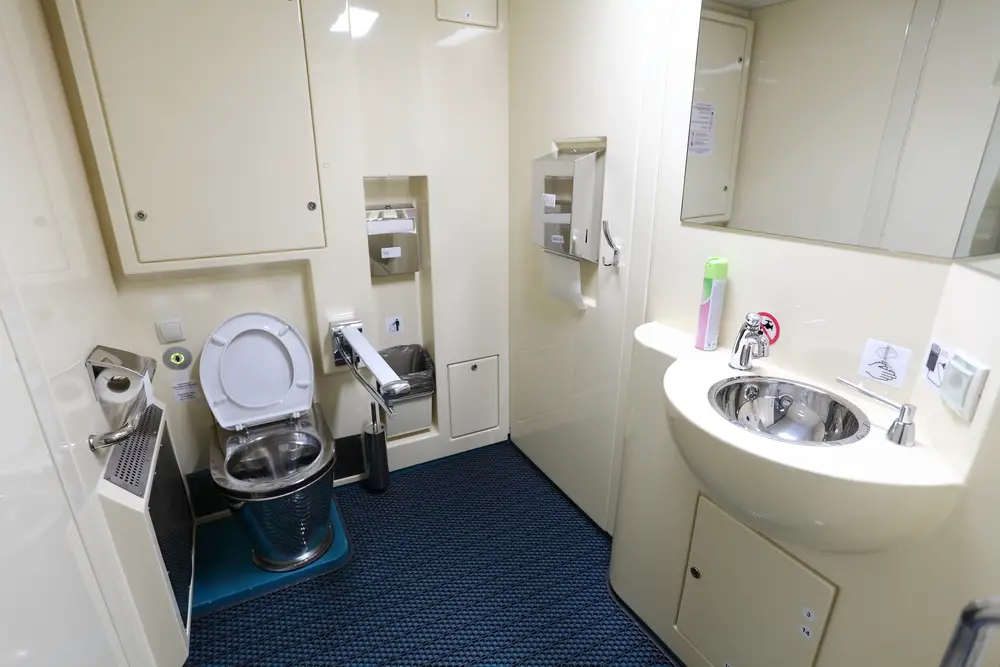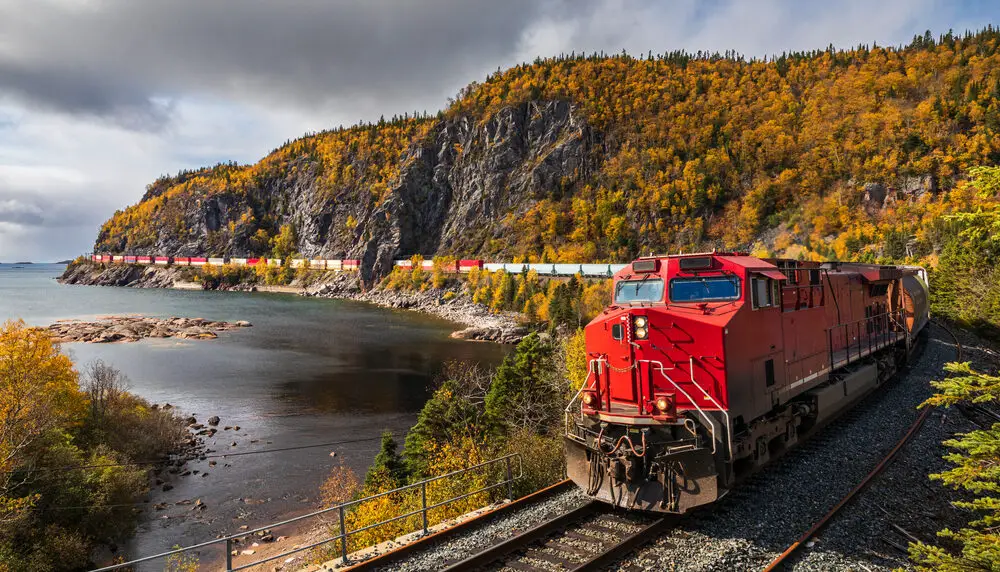
Commuting from home to work may not be a long train trip, so you may not need a bathroom break. Then again, sometimes our bodies don’t care where we are when “it’s time.”
But for medium to long trips, things could get nasty if bathrooms aren’t available. Before we embark on that journey, do trains have toilets?
Most modern trains have toilets on board, especially those that do medium-length and long trips. These are usually at the end of the carriages, and there are often also wheelchair-friendly toilets on passenger trains. Trains use different types of toilets, but most are environmentally friendly.
The USA has had a history of train transportation since the 1820s. By the 1830s, they were producing their own locomotives instead of importing them from Britain.
By the late 1880s, passenger trains became the most popular form of transport, and the railway companies fitted toilets in the coaches.
Trains With Toilets
We can be grateful that most trains have toilets today. It’s not something one could do without when embarking on a long journey. During the second half of the 19th century, technological progress sped up so that locomotives were soon traveling long distances.
When it became apparent that it was impractical to stop for long periods at stations for all passengers to relieve themselves, railroad companies started building lavatories into passenger coaches.
The Great Northern Railway in the UK first introduced toilets on coaches in 1882, a necessary piece of civilization when traveling long distances.
Types Of Toilets On A Train

Train bathrooms have improved significantly since the first ones were installed in the 19th century, but some countries still use the old, unsanitary flushing methods.
With more hygienic options available, one wonders why the old-fashioned types have yet to be phased out completely.
The Hopper
Early toilet designs such as the Hopper (also called a drop chute toilet) consisted of toilet bowls with holes in the floor. Some had very rudimentary flushing systems.
The Hopper toilet empties the waste onto the track. While most railways have moved away from this practice, it still happens in certain countries.
A well-designed drop chute throne pulls air through the vent downwards through the toilet, which helps to prevent odors.
Where drop chute toilets are still used, the railways discourage passengers from using the bathroom when the train has stopped at a station.
It is far from ideal for human waste to be deposited at the station where odors and the mess would be unhygienic, to say the least. In the USA, railway workers had to lock the toilets when the train stopped at a station.
The obvious disadvantage of such toilets is that dumping untreated toilet contents on the track can pose serious health risks and is not great for the environment, especially when dumping occurs over waterways.
Amtrak in the USA slowly got rid of drop chute toilets in the 1980s after a ghastly incident where a Silver Meteor train dumped its toilet contents while crossing the St. Johns River.
Some fishermen below received a dreadful surprise when the waste landed on them. They subsequently sued the company.
Chemical Holding Tanks
In more well-off, developed countries, newer trains typically use chemical holding tanks. These are similar to the portable toilets one finds at festivals. The tanks contain chemicals that reduce the odors.
The problem with chemical holding tanks is that they must be emptied regularly, e.g., at the terminus or where the train makes a lengthy stop.
If the train needs to move on quickly, employees may not empty the tanks, and the lavatory could block up, leaving the toilets unusable and closed.
Vacuum Toilets
Many new trains make use of vacuum toilets, which are similar to those found on planes. A high-pressure pump sucks the waste into a holding tank, but they have the same disadvantages as chemical holding tank toilets.
They also need a consistent power supply to work, and flushing solids, such as toilet paper, can destroy the pump.
Composting Toilets
The Netherlands and Switzerland use composting toilets on trains that break down liquid and solid waste through bacterial action.
Once the process is complete, the sterilized liquid is released onto the train track. Solids only have to be dumped every six months.
Intratech Processing System
Toilets based on this system contain a macerator, an ultraviolet sterilizer, and a bioreactor. The macerator shreds the solids and leads the processed waste into the bioreactor.
This space has membranes lined with waste-gobbling bacteria that reduce the solids to water and carbon dioxide. The toilet pumps away the gas, and bacteria-free water flows across the membrane.
The system sterilizes some of the water with its ultraviolet light and returns it to the flushing tank. A reverse-osmosis device filters out the chemicals left behind, recycling the water for washing hands.
Freight Train Toilets

You may wonder if freight trains have toilets. After all, there are no passengers to consider. Nearly all locomotives have a bathroom in the nose of the train for the engineer’s benefit.
Some are very basic, with no running water to wash your hands. Others may be more advanced with toilets similar to RVs and fold-down basins.
Trains That Don’t Have Toilets
Some small, older locomotives used in the yards do not have toilets on board because the engineer always has access to one at the station or a nearby office.
Trains in some areas that only make short local trips for commuters may not have bathrooms on board. This is often because the trains are exceptionally crowded, and adding toilets to the coach would take up unnecessary space.
Passengers don’t usually have to wait too long before they reach their destination, where they can use the station or home bathrooms.
Conclusion
Most trains have bathrooms these days, except old yard-switching locomotives and commuter trains that make short trips within their cities.
Today’s onboard toilets have come a long way since the early, primitive hole-in-the-floor type, and we can use more hygienic thrones when the need arises on the train.
